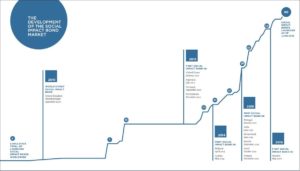Qualitative evaluation of London Homelessness SIB Part 2
The Department for Communities and Local Government recently published (20 March 2015) the very interesting second interim Qualitative Evaluation of the London Homelessness Social Impact Bond (SIB) where providers were paid on a payment by results basis for their effectiveness in helping rough sleepers.
This scheme produced a substantial amount of learning because two different organisations (St Mungo’s and Thames Reach) were each contracted to deliver services to half of a cohort of 831 entrenched rough sleepers. Each organisation chose a different form of SIB and it was possible to compare outcomes directly on a like-for-like basis.
The different SIB formats and the delivery model are covered in detail in my post on the initial interim evaluation. This initial evaluation came to the following conclusions:
- The payment by results approach had stimulated providers to develop an innovative and effective delivery model
- Performance against targets in the first year was mixed
- There was a significant amount of work involved for both commissioners and providers in developing a SIB and the payment mechanism for a PbR approach.
[divider]
Performance
This second report is structured around the five outcomes whose results drive the payments under the contract. These are:
- Reduced rough sleeping;
- Stable accommodation;
- Reconnection;
- Employment; and
- Health.
1. Reduced rough sleeping
Both providers have reduced the number of people sleeping rough in central London although only one achieved the full PbR target of baseline reduction minus 5%.
2. Stable accommodation
Arguably, this is the most important outcome as it represents a long-term solution to homelessness since the outcome measure is defined as entry into accommodation with a tenancy (as opposed to a hostel) agreement and then the sustainment of that tenancy at 12 and 18 months. Both providers exceeded their targets with strong performance at all three of these milestones.
All the stakeholders interviewed for the evaluation attributed the strong performance against this outcome as a confirmation of the “Navigator model” developed for this scheme where individualised support is provided by keyworkers who are incentivised (by the PbR model) to “go the extra mile”.
3. Reconnection
This outcome is an individual measure of reconnection to their home country for non-UK nationals without a right to reside in the UK. The reconnection outcome is the second-highest component of the total contract, valued at 25%. Progress against this outcome has improved but remains below target. The main reason for this appears to be the legal complexity of service users’ immigration issues.
4. Employment
Interestingly, the mixed picture of achievement in the initial period has continued into the second evaluation period with fewer clients achieving a target level of qualification and volunteering but higher numbers achieving full-time work outcomes at both 13 and 26 weeks.
5. Health
There is still no data available for the health outcome.
[divider]
Conclusion
This second interim evaluation strengthens the initial findings that payment by results may be an appropriate commissioning approach for this client group. The holistic, individually tailored Navigator model has proved to be a successful approach to supporting the complex individual needs of homeless people.
The PbR model appears to be incentivising delivery as intended and there is no evidence of perverse incentives. The ethos of the provider organisations means that they are both committed to continuing support for those who remain on the streets.
However, the challenge of developing a balance so that resources are focused on achieving a maximum return on payment for outcomes while continuing to support this vulnerable group is perhaps the main challenge for the rest of this project. The final evaluation which is due next year should tell us how well this balance has been managed.







